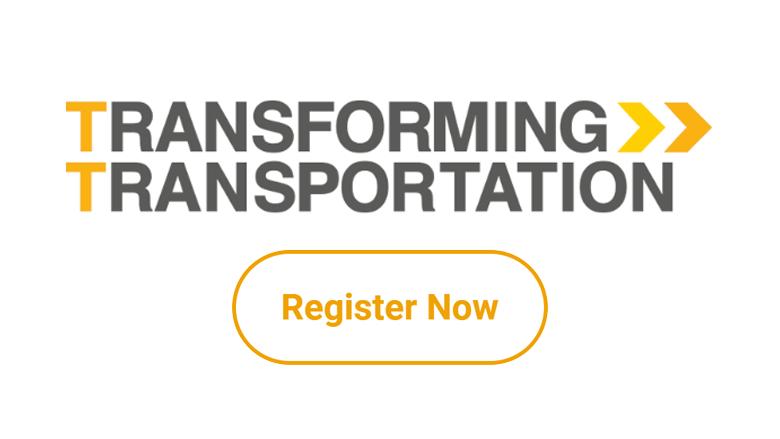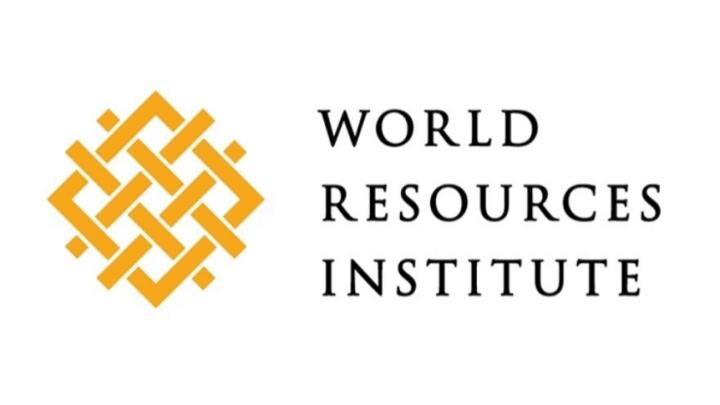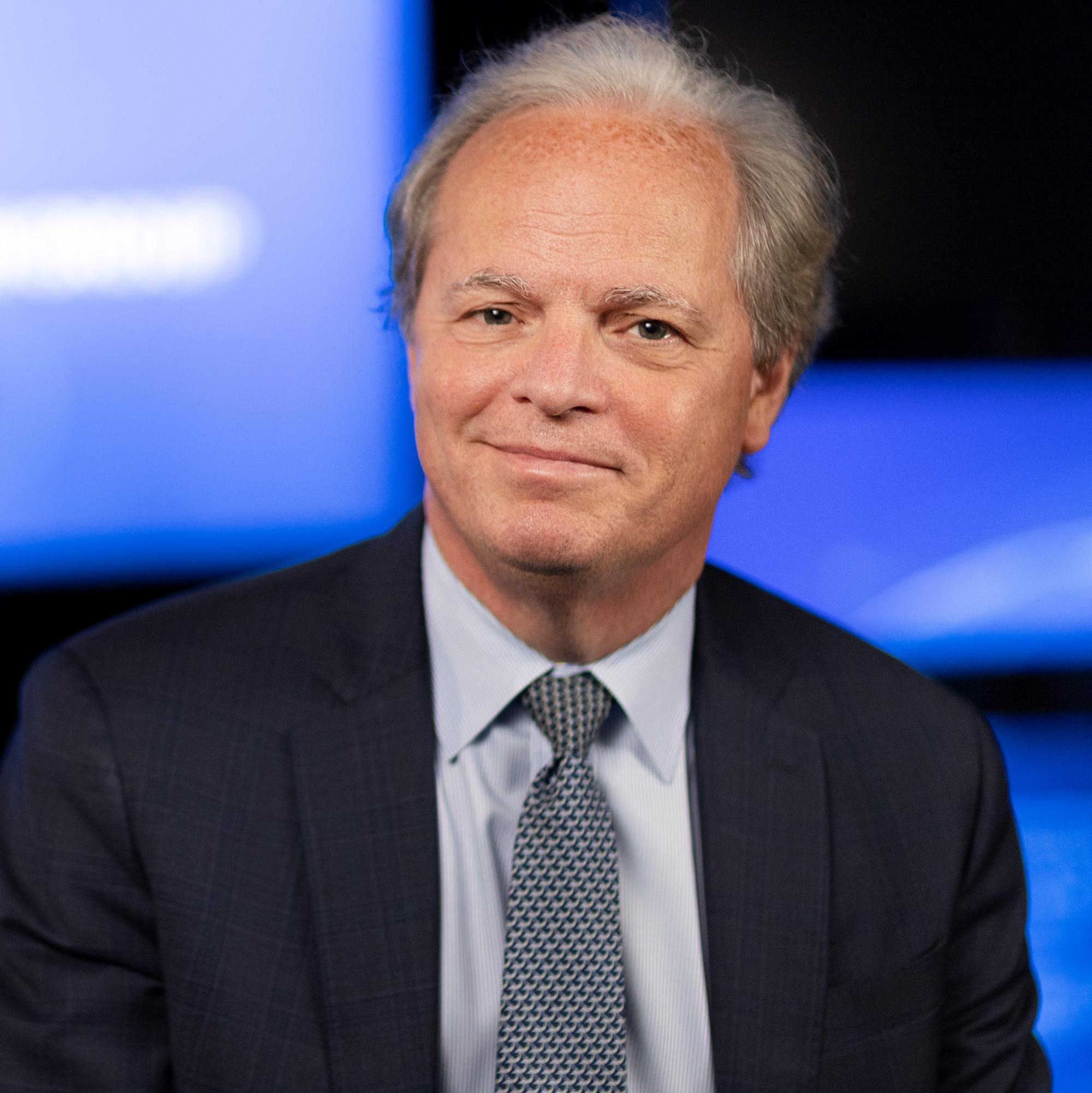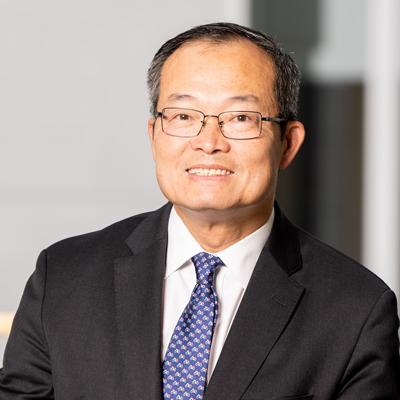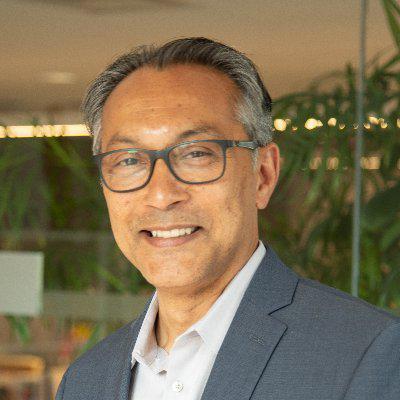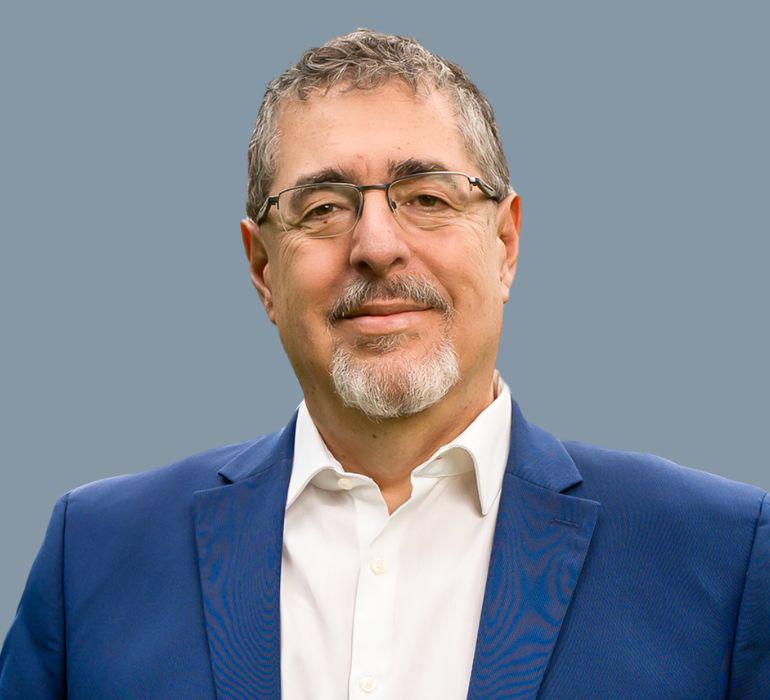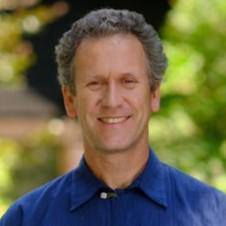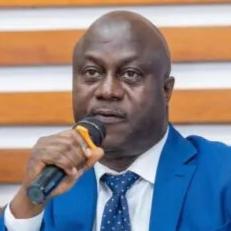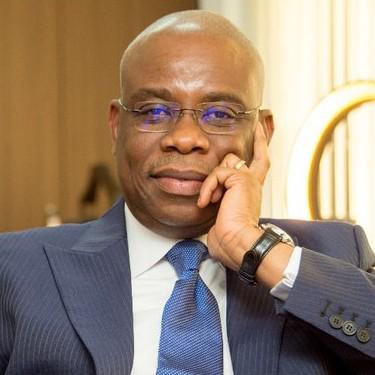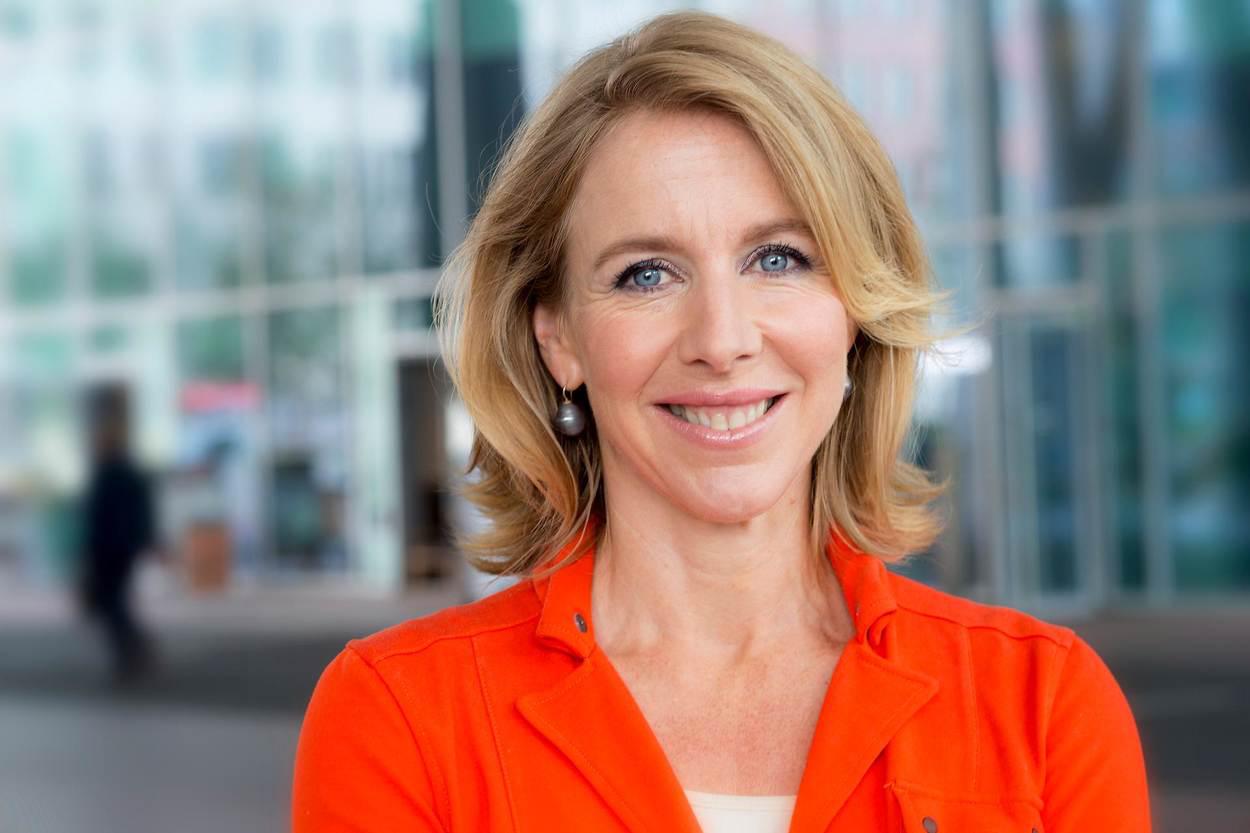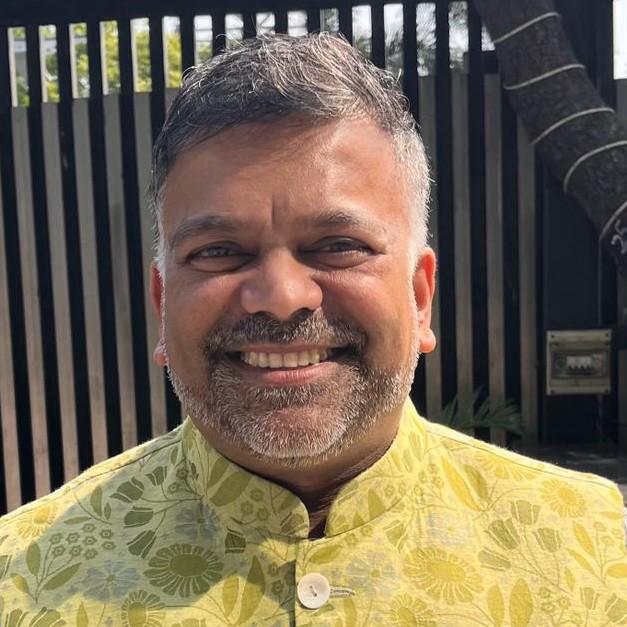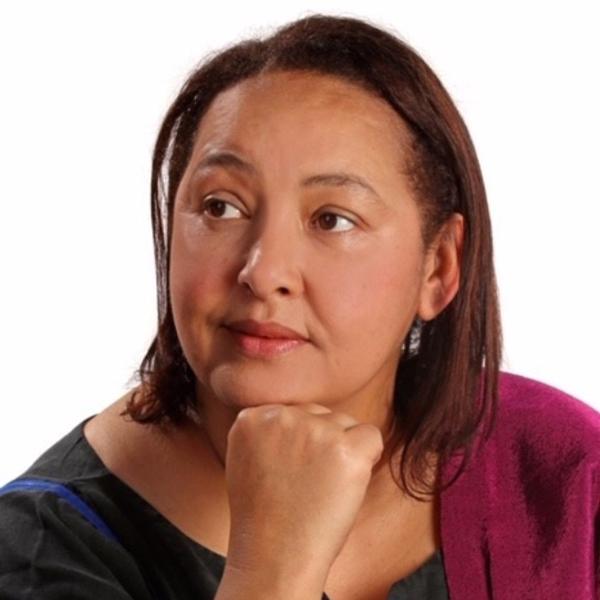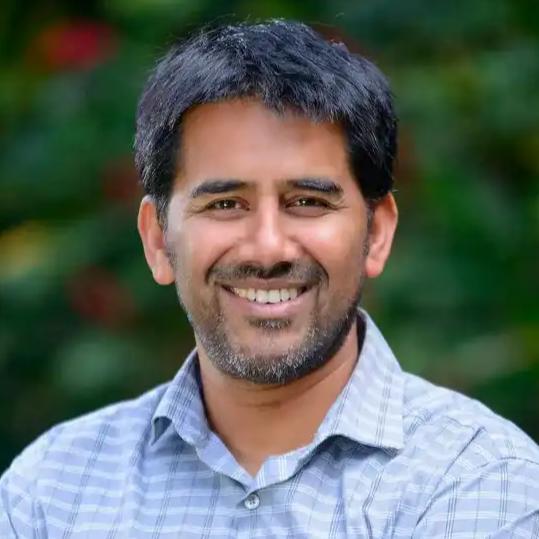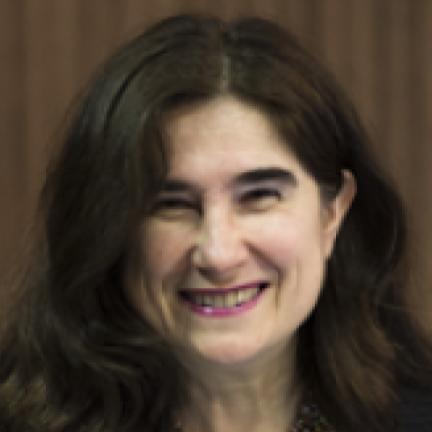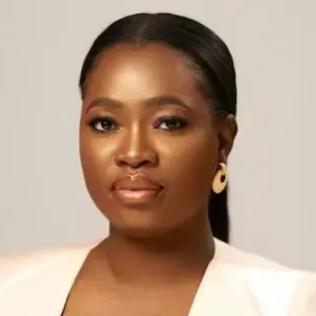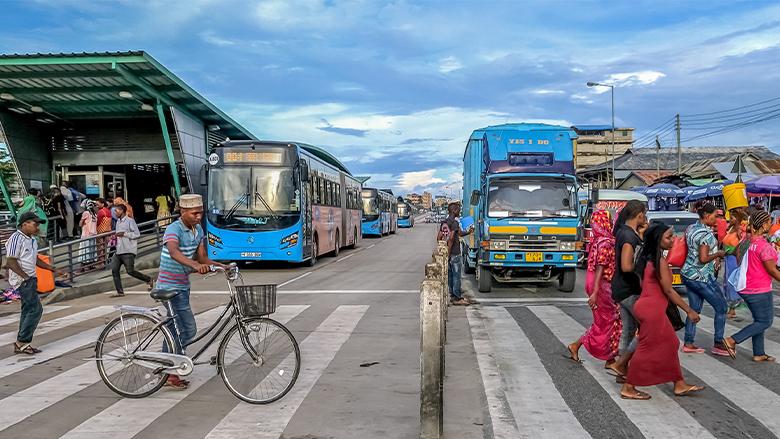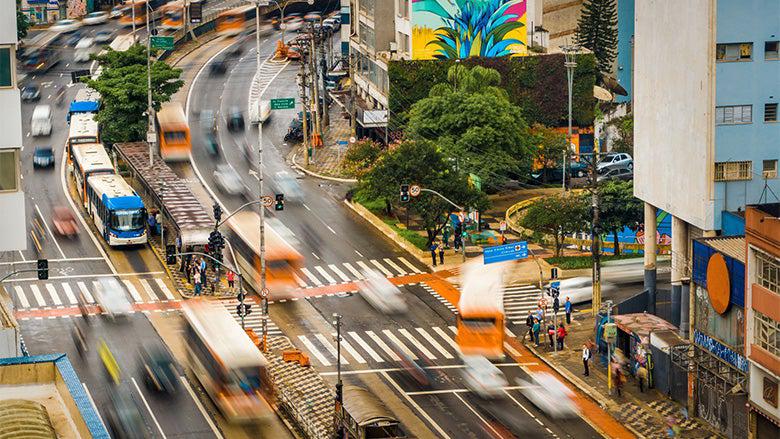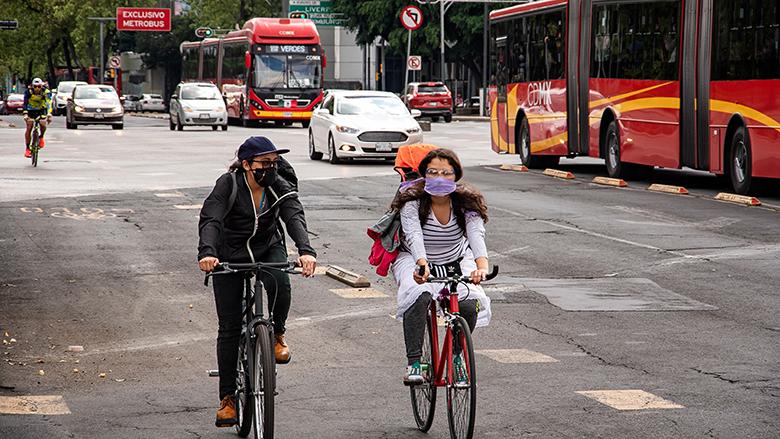[Femi Oke] Welcome back or welcome to day 2 of Transforming Transportation, the 22nd edition. Hello to our online participants. Hello to everybody who's in the room right here in the Preston, in Washington, DC. If you're online, a couple of things that you can do to be part of this conversation because we are inclusive, is on World Bank Live, you can be in the chat, you can have the conversation. We have moderators right here in the who will talk to you. Also, you can use the hashtag #TTDC25 so that you're always in the room with us as well. The mobile app has been updated, so you can find out what is coming up next in today's program, where you should be, where you should be listening into. It has a QR code. Also on the mobile app, there is interpretation in 60 languages, but the only one they don't have is South London. I will… [Laughs]. It's an indigenous language from the Southern part of the United Kingdom, but I will help you in the coffee break if you're not too sure what I am saying. I am your conference moderator, Femi Oke. It is my pleasure to tell you that the knowledge exhibition is open and has nine booths just outside. Please, go and enjoy that during the coffee breaks and the breaks during the day. Something very special I want you to look out for, and that is an AI-powered wheelchair that is in the atrium. It comes to us via the National Transportation Center at Morgan State University. Go and check it out, because if you ever go to BWI Airport, you will see it being used there, and it gets into tricky, complicated spaces. Our development partner is FIA Foundation. Thank you for being our partner. Now, the morning, the day, our program continues. I can't think of a better way to start the day with Axel van Trotsenburg, Senior Managing Director of the World Bank. He is better than a cup of coffee. Good morning. [Applause] [Femi Oke] Axel, when you go to conferences and you hear that first keynote conversation, in terms of what you want to hear, energy, dynamism, setting you up for the day, what is your standard? [Axel van Trotsenburg] Coffee. [Audience laughs]
[Axel van Trotsenburg] Good morning, everybody. It's a pleasure to be here. I think what I'm indeed thinking is the most important thing is how we can energize debate. This is not only here about transport, it’s anything on the development area. Of course, when people barely are waking at eight o'clock or nine o'clock, that's a challenge, but I think what we need to hear, or think about is what we are trying to accomplish with these kinds of convenings. It’s really to foster exchange, to foster learning, but also with a sharp focus, can we make a difference? Yes, or no? Therefore, I think what we need to see is not to have just nice get-togethers, but here is a whole series of ministers of transport to welcome them. But also, a lot of colleagues from across the globe are there. It is about energizing this trade. It is about impact. What we need to keep in mind is if you have a quarter of the world population [that] have not access to transport, then that's an issue. If a billion people have no access to all weather roads, that is an issue. When you look in Africa, when we need the growth agenda really picking up so that people have a chance, then you need to have those enabling environments. There is a very direct discussion about how we can do this. I think what we need to do is mobilize it, and it is ultimately then the action that needs to follow.
[Femi Oke] You see transport as being strategic when it comes to development. Can you unpack that more?
[Axel van Trotsenburg] Well, these are all the enabling ingredients for development. I think, let's keep this in mind. If we think that, for example, in Africa, the population will double by 2050, we see a massive urbanization coming. If urbanization is not done right, it will not contribute to welfare and growth. I've worked a lot there, in East Asia, China, Vietnam. These countries have used urbanization as really drivers of growth. And these cities were not just creating out of, well, let's do something, but there was some planning on this, and it really helped people create jobs and get people out of poverty. That needs to happen also in Africa. That means that if you do urbanization without transport, you are on the wrong track. It needs to be an integral part of this, and it needs to be looked at. It’s what we need to do. Now, that is one, that that realization is there. Secondly, what has to happen is it needs investments. Investments, if you're looking at China, at that time, they were investing 5% of GDP. Now, that's quite a bit, but many countries are investing less than 0.5%. 0.2%. How do you transform? Even the Bank, before I went there, I just looked what we have been committing over the last 10 years in IDA. It's about two and a half billion dollars per year. You said, well, that's a nice amount. Relate that to the IDA GDP, it's 0.1 %. Now, it's good that the Bank is doing this, and there is the uptake of transportation investment, including in IBRD. But what that means is, if this is reflecting of what actually public sector is now, we need to get the private sector in massively. That needs to be looked at, how we can create critical mass for investments, particularly in IDA countries. My view is that if we want to get there, and if a 2.7 trillion-dollar GDP is there, then we need probably something of 10 to 15 billion dollars per year in investments. We're not there. That is the ambition. I think what I like of this kind of convening is not to say how we can administer the status quo, but how to get to the scale.
[Femi Oke] You've taken us on a brief journey into what is necessary, what needs to be done, how much it will cost. I haven't heard any tangible stories, anecdotes. When I traveled around here, this is what I saw. This is a good model, because at the moment it's a series of very beautiful statements. Take us on the ground.
[Axel van Trotsenburg] On the road. Well, I cannot say everything in one or two minutes. My experience is mostly in Latin America because I was their Country Director, and I've seen in Chile, but also, particularly in Bogotá, in Colombia, with the bus rapid transport systems, and they were transformative. What is actually very useful of these meetings or of the Bank working as a knowledge organization, also those kinds of experiences were also helpful in actually learning for the Senegal experience where there was a bus rapid transport system created. What’s interesting for the World Bank, I think here, it's maybe still... But we talk so much about the One World Bank Group, namely after the public sector arm, the private sector arm, and then we talk and we talk and we talk. But here we did actually something where actually the public sector arm provided support, and IFC, and even MIGA came in with a guarantee. That helped, interestingly, mobilize private sector money to the tunes in around 150 million dollars. That is an interesting way how we can replicate it, and it is also, particularly what is important, it's doable also in Africa, because sometimes there are the prejudices, but here you could actually get the private sector in. What is more important is that what impact it created is namely with this system, people can reach their jobs within an hour commute. If you are looking around in many countries, people have to commute two hours to go to work, two hours back. They are like four, five hours on the road. This has reduced it dramatically. It then also created new job opportunities through that system, but also directly manages the system that's also creating jobs. That is, I think, what is interesting then when it is doable, and I think that is where we need actually to advertise that a little bit more.
[Femi Oke] You see our theme here, Axel, “Driving Change, Delivering Solutions.” It can be summed up in one word, implementation, which that's sometimes be the most trickiest part of the entire progress to sustainable transportation. What guidance would you give us today as we're discussing implementation? How to do it well, how to do it better?
[Axel van Trotsenburg] Before I get into the implementation, I'm more of an aspirational guy. The reason is you need to know why you're doing this. If we are, we'll do implement, say that that's uninteresting. But what is interesting is basically, to say we need to drive the change, namely that you actually can contribute to a much-improved state, particularly in the low-income countries. That needs to be our single focus that we say we have to create change so that there are job opportunities, there is growth opportunities, and then ask every sector how he can contribute. And then, basically, you realize that transport is critically important. Therefore, you need to invest, but you need to create coalition. You need to create partnerships, because even if you look in Senegal, it cannot be done not only with the World Bank. Of course, it has to be driven by the countries themselves. That is the first thing, but then we need to be the complementary force and not the only one. We can work with the other multilateral organization, with the other development organization, with the private sector. We need to have an open mind that driving change is opening also your mindset that you actually look at a much broader coalition to make it happen. Then, I think on the delivering solutions, that is where we need to be, the whole time at the cutting edge. These types of events are good to see what are the latest ideas in the industry, what can be done. I would add here, particularly, digital. Data is critical these days. We use data, but we are barely scratching the foray. That is not the transportation problem, it’s a general thing. What my urge is, it’s we need to see how we can with big data, with digital, serving new solutions on this. The final is mobilizing private sector, private sector that needs to get in.
[Femi Oke] The Bank has renewed its focus on capacity building, on knowledge for developing countries, and does original research. If we connect that original research with what we need to do globally for transportation, is there anything from the research that you've seen, that you've been following, that your teams have brought to you, that you would like to share with us today that's relevant to our conference?
[Axel van Trotsenburg] Well, what we have to learn is that transport, you cannot impose. Transport will need to be owned in the community. If there was an experience in Chile that was in Santiago, there wasn't a whole bus system that was to be transformed, and I was not consulted. That backfired royally. The issue is there that we need to learn how we actually find solutions that are really carried on by the municipalities, by the people, so that basically people see the benefit, but also that we are listening to their concerns. That can be also, for example, for women. How do we actually make sure that there is no violence against women? How do you respond to this? What are the options? I think that sensitivity should be there. I think also what we need to see is when we do knowledge, I think with the knowledge bank, we are trying also to actually change this completely in a sense, not that you have new insights, but it is the engagement way. I was the other day in South Africa opening or launching an inclusive growth study with the finance minister and the transport minister, by the way. It was about the way we did that, we did that together with think tanks, government. Actually, the product was the end result. It was not that you wrote it before and then you start consulting. It is the way you engage. The interesting thing is it brings many more ideas out, but also the ownership is stronger and the partnership is also stronger for them because they like that kind of exchanges with the Bank. We can then bring also different experiences across the globe, and that actually really enriches the discussion. This is also the chance for the whole transport folks here to see how we can be integrated into this specific transport solution, but never forgetting the overall picture for how we're working here together.
[Femi Oke] Axel, when I asked you about implementation, you said, “I'm the aspirational person.” Give us some aspiration. Share with us for the final thought.
[Axel van Trotsenburg] Well, look, for me, the main thing, the challenge of the World Bank is the biggest challenge ahead of it is in my mind, IDA, and particularly Africa. There, we need to bring all the strengths of the organization to make sure that actually we help transform the continent, a continent that has huge potential, has incredible... It's the youngest continent in terms of population and what we need to do, how we can help. There are many areas where we can, transport is what we want as one. The last thing is transport should not be seen only in urban transport. Their continent is not well connected among the countries. There is a huge growth potential of integration. Europe has always benefited from integration. It gives a huge boost. Right now, transportation is still poor, from air transport, to rail, to road transportation. Those things we need to do, I think we need to see similar to the M300, that initiative to connect 300 million Africans to electricity. It would be good [to have] a whole initiative that connects the entire continent with transport. That is where we drive the change, and we can do it. Here I say, I have to stop and shut up. Thank you. [Audience laughs] [Applause]
[Femi Oke] Axel van Trotsenburg, thank you for starting our program today. We appreciate you. Thank you. [Axel van Trotsenburg] Thank you. [Femi Oke] We are going to start our plenary for today via a video message, which comes from the Executive Director of UN Habitats, so all the way from Nairobi, right here to us in Washington, DC. Anacláudia Rossbach, ED of UN Habitats. Take a look at the video screen.
[Anacláudia Rossbach] Distinguished delegates, colleagues, and friends. It's my sincere pleasure to provide the keynote speech here today. Transport is the backbone of our cities, connecting communities and unlocking opportunities. Yet for many, especially women, persons with disabilities and marginalized communities, mobility remains a challenge. Transport must be safe, affordable, reliable, and accessible for all, ensuring no one is left behind. Technological innovation, urbanization, and climate change present both, challenges and opportunities for inclusive transport. While these changes can transform mobility, they risk exacerbating inequalities if not managed with equity and justice in mind. Digital platforms, data-driven solutions, and emerging mobility services can diversify the workforce, breaking traditional barriers and expanding opportunities for underrepresented groups. Training is key, equipping women and other prioritized groups with the skills to thrive in the transport sector. However, technology alone is not enough. A truly inclusive transport future requires strong policies, supportive local governments, engaged communities, and impact-driven businesses, all working together to design transport systems that put people first. A good example of this is the ACCESS Project, funded by the International Climate Initiative, where UN Habitats partners with UNEP, the Wuppertal Institute, ITDP, ICLEI, and others. This project, spending six Latin American countries, aims to integrate innovative policies and digital tools into urban transport to reduce emissions while ensuring equitable access for all. Access prioritizes gender inclusion, resilience, and safety, addressing challenges like harassment in public transport and the unique experiences of women in mobility. By strengthening local policy frameworks, the project takes a people-centered approach, ensuring that transport solutions are not just innovative, but also inclusive. During the 12th session of the World Urban Forum in Cairo, we explored planning cities with empathy in mind. An empathetic city listens, understands, and responds to all residents, celebrating the most marginalized. Inclusive transport is crucial to this vision. To create just, inclusive, and resilient transport, empathy must be a fundamental, daily practice, not just a reactive response. We need cities that reflect the diverse realities of their inhabitants. True progress comes when mobility is dignified, humane, and rooted in social justice. Moreover, we must recognize that inclusive transport systems are closely connected to adequate housing in the context of transit-oriented development. People should not have to choose between affordable homes and access to jobs and services. Integrated planning that links transport with land use and housing policies can reduce urban sprawl, commuting times, and carbon emissions, creating more sustainable thriving and inclusive communities. As we shape the future of transport, let us remember that inclusivity is the foundation, not an afterthought. Together, we can champion a just transition in transport, one that empowers communities, forces equity, and ensures mobility is a right, not a privilege. Despite our different perspectives and experiences, we all have the power to care, act and empathize. Thank you. [Applause]
[Femi Oke] I'm going to introduce the plenary members for plenary number four to come on stage. We are going to be Reshaping... Come on stage. I'm speaking South London. It's not translating. Welcome. The audience will applaud you as you come on stage. [Applause] [Femi Oke] Please, take a seat. You'll see your name tag, and you'll sit on the seat that is closest to your name tag. Thank you so much. Reshaping the future of transportation is our mission for the next hour, so I'm looking forward to that. I'm going to say hello to everybody. I'm going to give our audience your titles, and then you are going to introduce your name. Does that make sense? We're going to partner up on how we do this together. All right. Visiting scholar from Harvard, Inés. Hello, welcome. [Inés Sánchez de Madariaga] Hello. Good morning. My name? [Femi Oke] Please. [Inés Sánchez de Madariaga] Okay. [Femi Oke] It's early. We're getting together. [Inés Sánchez de Madariaga] Easier if I say Inés Sánchez de Madariaga. I'm a professor in the Universidad Politécnica de Madrid. This semester, this year, I'm a visiting scholar at Harvard University. [Femi Oke] It's so good to have you. CEO of WRI India. Hello. [Madhav Pai] I'm Madhav Pai. [Femi Oke] Hello, Madhav Pai. [Damilola Olokesusi] Okay, so my name is Damilola Olokesusi. You can just call me Dami. I'm Co-Founder and CEO of Shuttlers. [Femi Oke] Good to have you. Minister. [Alhaji Fanday Turay] My name is Alhaji Fanday Turay, Minister of Transport and Aviation for Sierra Leone. [Femi Oke] Good to have you. CEO and Co-Founder of BasiGo. [Jit Bhattacharya] Hi, everyone. I'm Jit Bhattacharya, CEO of BasiGo, headquartered in Nairobi, Kenya.
[Femi Oke] All right, great. We are going to be talking about how innovation in the transport sector is going to help us get to delivering, driving solutions, implementing solutions in a better way. I'm really curious to hear, and I know our audience will be curious to hear, about how you're innovating, Jit. Do you feel like you are an innovator?
[Jit Bhattacharya] Yeah, I think we are more than just an innovator. I think we're capitalizing on this incredible opportunity that's happening. I'm happy to share some background. [Femi Oke] Please, go ahead. [Jit Bhattacharya] For those of you, many of you might be aware of BasiGo, but for those of you who aren't, the opportunity that we are looking at is, as I think we can all acknowledge, public transport is still fundamental to mobility, especially in sub-Saharan Africa. A recent study by the Kenyan government found that 60% of the people living in Nairobi use a bus or a matatu every single day to get to and from work. On top of that, our bus sector is a private sector. It's private sector-driven. We have 20,000 busses in Nairobi. They are all privately owned. None of them are government. This is still quite common throughout Africa, while we're seeing varying degrees where government is getting more involved, public-private partnerships, things like that, there's still a large private sector contingent. The inspiration for BasiGo actually came in April of 2020, we had this magical experience where very early in the COVID pandemic, the government stopped all the matatus from running for three days. Overnight, the air completely cleared, and we were able to see Mount Kenya 350 kilometers away behind the Nairobi skyline. Most of the people living in Nairobi, most of the Kenyans, forgot that you used to be able to see Mount Kenya almost every day from the city. That showed us, we were given a glimpse of what would happen if we could clean up the public transport sector. We have this amazing resource in Kenya. Over 90% of our electricity is already coming from clean, renewable energy, but more than that, between the hours of 10: 00 PM and 6: 00 AM in the morning, we have 800 gigawatt hours every year of surplus geothermal and wind energy going to waste that could be used to charge public transport busses. This is the opportunity space that we found. I've been working in the e-mobility space for 20 years. What we've seen in markets like Latin America, China, India, is that public transport busses is one of these sectors where actually EV can be directly competitive with the incumbent for a long time. When we went through and did the analysis, we found that that was absolutely the case. Not only would an electric bus in Kenya mitigate 50 tons of CO2 per year, it could actually be more competitive than the diesel busses without government subsidies. As somebody who's been working in climate change for a long time, this is exactly the kind of opportunity that I've been looking for so long. What we're doing, our innovation, is we're bringing what we have seen in other markets work very well, a fleet as a service model, to these private sector operators in Kenya in order to help them be able to afford an electric bus. Because if you ask them to buy it, there's no way with a high cost of capital and the cash sensitivity in our market that they would ever be able to afford it. But through a fleet as a service model, which we call “Pay as You Drive,” they're able to access an electric bus for a lower cash down payment. They triple their return on investment, and we are able to achieve the climate impact, modernizing public transport, offering dignified public transport that's accessible to all the people of Nairobi. Absolutely, I think we are innovators because we found this opportunity space and saw an opportunity for radical transformation. [Femi Oke] I now know what it's like to be at one of your pitch meetings. That's phenomenal. I'll buy one. Whatever it is. [Jit Bhattacharya] You have your checkbook? [Laughs]
[Femi Oke] Minister, you were looking very thoughtful. I can tell you were leaning into what Jit was saying. What question did you have for him?
[Alhaji Fanday Turay] We were discussing the similar issue. We had a challenge for us in Sierra Leone. We're only starting now to introduce the cashless system. But then before then, we had a series of leakages. I was just trying to ask him with technology to see how this can be brought forward. I mean for us in Sierra Leone, so we can also tap from them. But Sierra Leone--
[Femi Oke] Can you ask that then? Because Jit’s sitting right by, are you allowed to tell him? Is this going to spoil your business model? [Laughs]
[Jit Bhattacharya] No, I'm happy to tell him, but I think this is what's going to be really exciting about this panel is I am working on one pillar of transport innovation right now, at least on the African continent. But what we're seeing is that there are a number of different areas of innovation. So, one is electrification, another one is really focused on connectivity and making the entire system smarter. The third is around digital payments and the transition away from cash. And so, the ecosystem is transforming very quickly on multiple fronts all at once. I think you're going to hear that across the panel.
[Alhaji Fanday Turay] And that is where exactly we are. We have just started that, but we have some challenges. Maybe for Sierra Leone, before today, we had a transport system which was informal, and then the population as well has grown so large. The public transport system is very much unregulated. To do that, we have now started the process of having, firstly, a regulatory framework, which we have already put in place. To do that, we have a company, but before coming to the company, we have a government agency which is now responsible to regulate all this informal transport sector. They have now started putting measures in place, including this cashless system, which I was just talking about. We are moving slowly, slowly. We have just started, but with the support of the World Bank, we are moving forward. We only have one company at the moment which is running the public transport, but it is a public-private partnership model, which we are using.
[Femi Oke] Damilola? [Damilola Olokesusi] Yes? [Femi Oke] You are innovating in the transport space. Tell us how you're doing it.
[Damilola Olokesusi] As Shuttlers, we provide a scheduled bus sharing and cash sharing service to daily commuters. For those of you that don't know Nigeria or Lagos, Nigeria has a population of over 200 million people, and Lagos, where I live, has a population of 20 million people. For the 8 million daily commuters that drive to walk or use public transport, most of them spend at least 2 hours trying to get to work. The idea for Shuttlers came when I was... So, in 2016, I just got employed in an engineering firm as a young chemical engineering graduate. I was in the dire need to provide a solution that I could use and I could control the safety conditions in the busses. My sister was a victim of a robbery in busses called Danfo. With this, I realized that a lot of my female colleagues had similar experiences. As I continued to use the public transport, I became very anxious. I wanted to create something that I could use and my family members could use, my friends could use. That's where the idea came from, to find operators that had clean busses, train drivers. We could partner with them, operate them in a scheduled manner that people can predict when they will get to work, make that service available on our app where people can book the rides in advance, even one month in advance, and they can shuttle to and from work. Now, people that use our service, about 50% of them own cars, and they're able to carpool and buspool through our platform, and we contribute to either reducing the traffic congestion or carbon emissions in the atmosphere.
[Femi Oke] Do you have, I was going to say, something like proof of concept? But other than the people who are using the app, is there anything else that's telling you, this is going well, this is the right direction. I really am innovating in transport?
[Damilola Olokesusi] We are in over 300 routes in Lagos. There's a metric that we track on our app, which is “attempted bookings.” We find that only a fraction of people that search for routes are able to find seats. We have a supply problem. We have more demand than supply because to find quality busses at a price that our customers are able to pay for, because our service is 60% to 80 % cheaper than ride-hailing services, slightly about 10% higher than public transport because we are targeting those that drive private cars. The trick is to find affordable assets. The metric that helps us to confirm that we are solving a huge problem is that we have more demand than supply, and we are able to track that metric on our app.
[Femi Oke] Inés, you come to our conversation with a particular expertise. Would you summarize it for us? Because then I'd like you to talk to Damilola about her innovation through the lens that you bring to our conversation.
[Inés Sánchez de Madariaga] Yes. Well, I work on women's issues in transportation and city planning, also in housing, anything related to the built environment of which transport is a key aspect. A few years ago, for a work that I was asked to do by our Spanish Ministry of Transportation, they asked me to do a gender analysis of transportation statistics that were produced in Spain at the time. That was 2008. I did that. I identified a number of biases and omissions of women's ways of traveling. When I had finished it, I realized that it was like something that came, a light bulb in my head, like an illumination, that the standard categories that are used by transportation agencies around the world… Standard like work, education, shopping, strolling, visits, escorting, and black box others, that really many of the trips that were happening, that happened for the purposes of visiting, escorting, shopping, strolling, are really trips that people, statistically, women, do for the purpose of having the household work and having people who don't have autonomy to move along around the city, go to the places they have to go, like schools, or doctors, or anything that the young, the elderly or the sick have to do in the city. I had this idea of naming these trips “mobility of care” or “care-related trips,” because care is a key concept that has been used to understand all the tasks that people do for the reproduction of life, for the support of life, for daily life to happen in smooth ways. To happen, basically. I had this idea of creating this analytical framework, this conceptual framework, but also a category that can be used in technical terms as a purpose for travel when we collect data. By naming those trips with this umbrella category, we can make them visible. This way we change our viewpoint or how we understand in broad terms the transportation systems, and how people use them, and the needs of people, so we can make them visible, and we can also quantify them. I published this in a toolkit by the European Commission and the University of Stanford called “Gender Innovations.” This had a broad impact, then also by the IADB and many others around the world. It's demonstrating to be a quite useful way to understand women's ways of traveling and their needs. That very much complements the issue of safety. Before that, safety was a key issue, and it is a very important issue for women, but we also need to look at what are the specific ways of movement. That's what the mobility of care as an innovation, a conceptual innovation provides for transport policymakers. [Femi Oke] Thinking… [Applause]
[Femi Oke] Don't be shy. Thinking about the mobility of care, what would you want to ask Damilola and what would you want to ask Jit? Are they creating mobilities of care?
[Inés Sánchez de Madariaga] Well, yes, I would like, because you have mentioned the issue of safety, which is key for women because this mobility of care, it has to be safe. But it also has to relate to the movements that women do, and the trips that they do not do because there's no possibility, the mobilities. For instance, a few years ago for UN Habitat, we did a study of the matatu system in Nairobi, and we found that women did, on average, one trip more than men, that this trip was done for care purposes, and it was as long as the trips done for work. This totally changes the understanding of the needs of men and women. It's very different. In Spain, we did this analysis and we found that the trips that men do between 30 and 45 years of their trips, they only do 9% for care purposes, while women do more over 40% of their trips are for care purposes. It's a huge sex difference.
[Femi Oke] Minister, you're just right at the beginning of thinking about your future of transport. That mobility of care, did that resonate with you?
[Alhaji Fanday Turay] Thank you for that question. I think it would be good for me to also share our experience in so far as gender is concerned. For us, this pertains to especially the bus drivers and conductors. We wanted to train female drivers because Sierra Leone, most of the drivers are mainly male drivers. For inclusivity purposes, we also decided that we should have female drivers. Fast forward, we advertised for female drivers and you couldn't believe we had only five that came forward, and out of the five, when we eventually wanted to start the training, there was none. The reason being, firstly, is because the safety issue, which the professor was talking about, because there is this culture that if they drive the busses, maybe they would be intimidated, and because it's not a common practice in Africa or in Sierra Leone, in particular, to have women driving public transport. We decided to change from the formal way of advertising for jobs. Then, we decided to go through gender outfits within the country. We went through them, telling them that we need female drivers to be able to come on board for training.
[Femi Oke] Just so we can imagine it, how did you do that? How did you tell women that we would like to recruit you as drivers? What was the messaging like? [Alhaji Fanday Turay] We sent a message that we needed drivers. [Femi Oke] What was it? Was it on a text? Was it on billboard? [Alhaji Fanday Turay] And then women are encouraged to come forward for the training. Yes. [Femi Oke] Okay.
[Alhaji Fanday Turay] Once we did that, nothing much. We didn't receive most of them. Then, we went through the gender outfit, told them about it. Then, because of the trust they had with the gender outfits, they were able to speak to them, the Gender Ministry, and also other outfits. They were able to convince them that, “Hey, this is good, it's good for you to come.” They gave them the assurance in so far as security was concerned. Then after that, we received… Hundreds of them came forward. Now, I'm happy to let you know that we even received more than the number of female drivers we wanted, that is over 500. But we had to also put the requirement up so that we can reduce the number of drivers. That's worked very well for us. [Applause]
[Femi Oke] How many female drivers do you have now? [Alhaji Fanday Turay] Currently, we have only one driving, but then the training would soon finish in the next three months. We would have more drivers, more than the number of busses that we have. We will be coming back to the World Bank for more support. [Laughs] [Femi Oke] Have you been on the bus that's driven by the female driver? [Alhaji Fanday Turay] Oh, yes. Sierra Leone, in fact, statistics in Sierra Leone, and I guess all over the world, shows that female drivers tend to be better in so far as the drivers are concern than the male drivers. [Applause] [Alhaji Fanday Turay] It is really working because— [Femi Oke] Data is very important. [Jit Bhattacharya] Female conductors are in higher revenue as well. [Alhaji Fanday Turay] Yes. With the busses that we have, the female driver that is driving her bus, till today, it's almost a year, not a single accident from this female driver, the single driver, but with the other drivers, of course. [Laughs]
[Femi Oke] Jit, we can't talk about innovation without talking about tech, and you bring the tech to our conversation. Can you explain what you're doing that helps us look at the future of transportation? Because for you, the future is right now. [Madhav Pai] We talked about data. [Femi Oke] Sorry, Madhav.
[Madhav Pai] That's fine. With geospatial, with computer vision, with AI, you are able to really democratize data. What we are trying to do is three things: build open source, find a way to let co-creation happen through convenings and discussions that are public in nature and really allow the market and the community to build on top. I'll give you two examples, one which is very relevant to what Jit and Dami talked about. India, about 10 years ago, did the unified payment interface, which really enabled peer-to-peer digital payments by creating a standard or a protocol. This is like the Internet protocol. They created this standard and protocol to allow banks for individuals to transact through their bank accounts. We're trying to build a DPI for transport. Any vehicle location device, any payment device, any battery device, any charging device, can we set the standards and protocols? These are like Lego blocks that someone like Jit can then use to build on top. Simple examples. Today, if a bank that wants to lend to an electric bus, if they can see the battery health data, they can tell the end-of-life cost, they can actually give you better interest rates. We have seen amazing innovation come in India when we did the payments. Language was a barrier, somebody put a voice box. OTP was there, somebody just found a way to get it automatically uploaded. We believe that if we want to allow interoperability, there are these four devices, data, payments, location, battery charging. If we can build the standards and protocols, it will unleash the market to be able to build on top of that. That's one idea. The other thing, and why I'm saying also now, geospatial analytics, computer vision, AI is allowing. I'll talk to you about some work we are doing in the temple city of Varanasi. They just redid the temple there. In two years, the number of visitors has gone from 13 million to 130 million visitors this is leading to extreme crowding. Now, using imagery, we've been able to train a bird counting algorithm because facial recognition doesn't work because the crowds are so high and have developed standards to say that once you go past six pedestrians per meter square, it's stamped like condition. How can we use computer vision to generate this kind of data to be able to give trigger warnings of when crowding situations get into stampede situations, how can we create, then use urban design and other strategies to manage. Again, the idea is not for us to do it, but for us to build A, the methodology for assessing pedestrians and crowding, which really is missing from our ecosystem, bring this data using this computer vision AI, but then also get a set of innovators to actually start building the solutions or building the tech that is required then to trigger the warnings and things like that. Then finally, I think with your special analytics, and this is something we did in Bangalore very recently, about two weeks ago was we built an open-source platform called Ship Transport. The idea is to use OSM data, and we've done it for about 25 cities, and it's very easy to do. You can basically, really create these 40-foot panels of mobility in your city with visualization. We created a public exhibition. Some 10,000 people came, bureaucrats came, politicians came, we had media. We were able to talk about complex transport systems in a much more nuanced way than you would actually do when we're trying to explain it. Once people are able to see the visuals, they're able to see why certain parts of the city are getting stuck, why they're not. Then the dialog builds. Now, we've built this in a way that local communities can, A, take this data and create this exhibition. You create this large discourse basis. B, actually young students, etcetera, can actually start to build more data into this, more data about transport demand, more data on how supply functions, and really talk about performance and change the discourse. Even today, most of the discourse in our cities is traffic, congestion, building double-decker flyovers, triple-decker flyovers. Nobody's really talking about last mile connectivity. Nobody's talking about how women move, and nobody's talking about these stampede-like situations. How do we make this mainstream? I think the idea is to use these technologies that are available, but also create the space for dialog and discourse and for everybody to build together.
[Femi Oke] That's a mindset issue, isn't it? It's a mindset challenge. How do you change that?
[Madhav Pai] Well, the first thing is to start actually getting people engaged in deeper conversations. Getting media in was very useful because they're not experts, and they find it very hard when experts like us speak. I think using visualization, using these more immersive techniques to bring them to the conversation, really then also helps with the mindset changing. I think finding a place for community to participate in these things also allows some of this mindset changing to happen.
[Jit Bhattacharya] I have another perspective on how we can get that mind shift change, and that is market-driven. One of the things I think we're hearing, especially going back to what you were talking about, Inés, one of the things that I feel like we're seeing is the public transport sector in a market like Africa has been ossified. There's been no innovation. There's been very little change. I was actually speaking with a student group from Kenya last week, and I was asking them, “Do you remember the matatus you used to ride in the '90s?” “How much have those changed in the last 34 years?” And they say, hardly at all, hardly at all. Meanwhile, the Internet has changed. The phones have changed. The rest of their life has changed, but their public transport has not changed one ounce in almost 34 years. This is what we're seeing now is, now we're in a period of radical transformation, whether it's through electric, whether it's through payments, whether it's through data, and becoming a lot smarter about how the routes need to work. All of these are coming together in order to create a brand-new public transport experience, one that's much more on demand. It's cleaner, it's more comfortable, it's connected, it's achieving all of these things that we wanted to, and it's happening very, very fast. What's driving that? Well, one of the craziest things that we saw when we launched our first two electric busses in March 2022, something we did not expect. We put these on the road. They're just competing as regular matatus. As you know, we don't have bus schedules in Nairobi. Busses go to a queue. They have to stand at a stage in a queue, and the bus at the front fills and then it goes. Passengers would get out of the diesel busses at the front of the queue, go backward in line, four or five busses, to get onto our electric bus because it was more comfortable, because it was connected, because they could charge their phone. What did we find? The mindset shift is happening by passenger demand. They are demanding this. It's then resulting in higher revenues for the bus operators. It's then resulting in them putting 862 deposits with us. It's market-driven. I think that's one way we can make it happen. [Femi Oke] Inés, go ahead.
[Inés Sánchez de Madariaga] Well, this is a way of demonstrating things. We call this a similar way of promoting changes through pilot projects. I would say this is like a bit of an equivalent because you show a different way of doing things. By showing a different way of doing things in a demonstrative illustrative example, people see this is a better thing and we want that. This is like the idea of the role models that we use so much when we want to promote women's participation. For instance, your bus drivers and so on, then you give them prizes, as you have done in India, recognizing women in the transportation sectors by giving them prizes to make them visible. This encourages and contributes very significantly to change. This is like the demonstrative effect. This is a very powerful way of contributing to more inclusive transport systems or anything in planning by demonstrating how the participation of women or how a particular project serves better the needs of women. We have done that. This is a different field like in housing. I would like also to mention in relation to the issue of data and technologies. Another key aspect for women is affordability because women have much lower economic resources than men. In India, you have this very interesting experience of having free busses in a few cities for women, which I think is contributing very significantly to have a very positive impact on women's access to jobs and education, for instance. Pricing systems that improve affordability and also lessen the price of trip chaining and transfers, which is another very typical way of moving by women and how the integration of pricing systems across the multiple modes of transportation, those are key issues that should very much benefit from the use of systems that you were describing. Maybe you can contribute to that.
[Madhav Pai] Absolutely. The city of Delhi and also the state of Karnataka, they basically made busses free for women. We're starting to see early results, but really in the lowest income, it is allowing them… Women which were going 5 kilometers are now going 15 kilometers. That is increasing their access to education, their opportunities. There is a lot of resistance to this idea of making it free, but clearly, from an inclusion of women in society perspective, especially in the lowest income groups, it is showing dramatic results.
[Femi Oke] Where's the resistance coming from, from making it free, from the operators?
[Madhav Pai] No, because it's publicly run. It's really what it costs the exchequer. It's a welfare scheme, if you want to call it. But if you are able to then, I think then the responsibility is ours to show the economic benefits and the economic opportunities doing this creates. The bus service in Bangalore, for example, if you actually… There was a clear increase in ridership of overall ridership because now more women are accessing the system. If you actually count for the fares these women would have paid, that service is now profitable. Now, how do we account for it is actually economics. I think that is something that it's good, and I think it can be designed better. There are a lot of women who can afford who are not using the free service and are asking to pay. I think if we build the right communication, if we create the right messaging, then it works. Now, one more point I'll make. I think on the previous, you asked me, I talked about this event and I talked about how do we engage. The other thing that we were able to do is we got the auto rickshaw driver women on stage. We got people who run. There are a lot of enthusiasts that run bus… These are bus geeks. They run bus route apps and user groups on WhatsApp. We gave them stage. They created a quiz for the city to participate on how busses operate in the city. I think creating these voices will also help us to creating the space, really, to help these voices to come in front. That's the point that Inés was also making. I think will also help us drive some of this change. [Femi Oke] Sure. Minister, go ahead.
[Alhaji Fanday Turay] No, I just wanted to touch a bit on the aspect of mindset, just to share our experience again. For Sierra Leone, for us to be able to change the mindset, what we came up with is the policy aspect. We use the policy to be able to change the mindset. Again, we are just growing, Sierra Leone is just growing slowly, slowly in so far as formal or informal transportation is concerned. What the policy is, what we did is we have a policy titled “Radical Inclusion.” What this Radical Inclusion seems to look at is to be able to see those individuals that have been excluded. These include, for example, disabled who cannot board public busses. These include students that are at the far end of the country and have no access to public transport, or even if they do, because they are disabled, they will not be able to board those public transports. It's not. It wasn't working. As a government policy now, we have changed that completely. With the busses, for example, within the urban area, we have ensured that those busses have the facilities that goes, especially for the disabled so they are able to board those busses and go to work. The same applies as well to the public transport as well, to be able to not only travel within the urban areas, but between the urban and the rural areas, thereby creating the environment for economic development.
[Femi Oke] I'm going to open up the room for questions. Please, stand behind the microphone, either at the back of the room or towards in the middle of the room. Don't leave it to the last minute because we have another speaker in this session. So, get on the microphone as quickly as you can. I am going to start online, though. I have an online question, and you’ve kind of addressed this. I'm going to bounce it back just so that we get the absolutely definitive answer. “How do we make the business case that investing in safe and accessible transport options results in economic benefit for all, including transport operators?
[Jit Bhattacharya] Well, that's a very easy question for us to answer, at least in the East African context. In the East African context right now, there is a push from public sector now all the way down to private sector in order to accelerate electrification. It's all driven by the fact that electric is more competitive than diesel. What has changed? That's made that happen. Of course, technology cost has come down. But another important thing has happened in the last two years, and that is ever since the war in Ukraine broke out, as well as US interest rates began to rise in 2022, most African countries have had to remove fuel subsidies. We are now operating on a level playing field. We don't have additional subsidies in markets like Kenya. We have some small subsidies in Rwanda, but we don't have additional subsidies in Kenya. But because we're operating on a level playing field, the electric busses are far more economical. Not only that, from the public sector side, every electric bus we put on the road is reducing imports of diesel fuel by 20,000 liters per year. That is preserving foreign exchange that's helping improve the economy, helping bring currency stability, while also improving the net economics for the bus operators by a huge margin. This is why right now for us, we have 862 deposits on our reservation list from private bus operators. That's going to take us three years to deliver against this back-order list right now because of the benefits to them. [Femi Oke] Damilola, your thoughts?
[Damilola Olokesusi] Yes. One interesting thing about our business model is that we're asset light. We don't hold the busses. We have about 350 vehicles on our platform, and 70% of them are 28-seater busses, and 30% of them are vans and cars. What we promised the 160 bus operators on our platform is that we would help them guarantee their revenue monthly. What we then do in return is to sell those seats in advance to companies and to professionals. We have contracts to companies that that can pay per seat and individuals that can book in advance to assure the operators of their revenue. Where a private company were not subsidized by any financier, we have venture funding. So, we need to ensure that busses on the road are profitable. What we promised our bus operators is that they'll be able to make revenue on our platform.
[Madhav Pai] One sentence for me on this. India is going to do 80,000 busses. I think Jit is indicating the demand that is coming from Africa. We're at the World Bank. We need to unlock serious international finance for us to actually move on the electrification journey. The money that is there today is not enough. At the interest rates that are affordable and right, this is a huge opportunity to unlock finance. [Femi Oke] Minister, you had a thought, too.
[Alhaji Fanday Turay] Yeah, just to add to what my brother said here. For Sierra Leone, I think it's helping us. Firstly, the commuters. Before today, from one point to the other, they used to take two or three public busses to get to their location. But with the World Bank project which we implemented with the 50 busses, now they are paying half of that because the busses are taking the individuals or the commuters from one point to the other for half that price. Also, infrastructure. Clearly, because we are going to have more busses, more bus stops, and more other opportunities rising, thereby giving them a lot of income. [Femi Oke] Inés, briefly, did you want to add something?
[Inés Sánchez de Madariaga] Yeah, very shortly. We have a technique, gender impact statements of projects, that can be used, for instance, in the case that we were talking about before of public operators in India, are the spillover positive effects, not just on transport, but on the economy of having this particular measure taken up for a wide mobility under certain conditions that certainly has a positive overall economic effect from a wider understanding.
[Femi Oke] Okay, great. I'm going to take several questions all in one go. Good morning. At the front of the mic. [Emma MacLennan] Can you all hear me? Is this okay? I'm Emma MacLennan. I'm the Director General of EASST, the Eastern Alliance for a Safe and Sustainable Transport. We work in 15 countries, mainly Central Asia, South Caucasus, Eastern Europe, Baltic States, and the Balkans. I love the concept of the mobility of care that Inès proposed. I would also say there's another concept, which is the mobility of autonomy, because people being cared for, people with disabilities, are autonomous human beings. Our organization has done some surveys in different countries and have found that people with disabilities with skills are unable to get employment because they have no mobility. This is really important economic consideration in addition to an equity consideration. So, my question for the panel is, how do we ensure good stakeholder engagement so that people with disabilities, I'm glad Inés, you mentioned people with low income are part of the planning process, are actually consulted, and their needs are taken into consideration? Because I think that's a vital thing. By the way, I'm so pleased to hear the words inclusion, equity, and gender. [Femi Oke] You are such a troublemaker. [Emma MacLennan] I am. I'm also from London, so there you go. [Femi Oke] I knew it. Thank you, Emma. Please, take a seat. I'm going to take several questions. We will get to that one straight away. Hello. Good morning. What is your question?
[Cecilia Briceño-Garmendia] Good morning. I'm Cecilia Briceño-Garmendia, Lead Economist from the World Bank Transport. Thank you very much to all panelists. Dr. Inés Sánchez de Madariaga. Thank you for bringing the demand side of the story so clearly. The importance of this transversal, invisible heroes that are caregivers, which cuts across gender, cuts across age, cuts across income level. I think that is the way that we reshape the future of transport. I have no question, just comment. Thank you. [Femi Oke] Good job. You didn't tell me that at the beginning. Thank you for your statement. If you have a statement, please sit down. We're doing statements in the coffee break. [Claudia Adriazola-Steil] All right. [Cecilia Briceño-Garmendia] I have a question, right? [Femi Oke] No, no, no. That was beautiful. Please, take a seat. Beautiful, beautiful, lovely. Take a seat. Thank you. [Claudia Adriazola-Steil] Thank you. Claudia Adriazola-Steil, with WRI. I just love this conversation, the future of transport, and all the future is public transport with gender, cleaning air. I really love how you are seeing that future. One thing that you haven't discussed is demand management, because if we really want to run public transport and not have people so delayed in public transport, we need to clear a little bit the road. Any thoughts about that? Thank you. [Femi Oke] Thank you. Next question. [David] Hello, yes. I was curious how freight transport plays into this, especially in somewhere like Freetown, hillsides, where you have a lot of small businesses often owned, operated by women, being able to access goods and transport goods up hillsides that may not be accessible. That's a critical issue, and I'm curious how that's been dealt with. [Femi Oke] Thank you. I'm going to take one more for now. Hello, sir. [Harsh Verma] Hello. I'm Dr. Harsh Verma, a Founder and CEO of PeopleSense.AI, coming from California. Crowding is a problem everywhere, even in California, where sometimes there are busses moving with very few people in it. However, there is a challenge of crowding. It was really nice to hear from the panelists talk a little bit about it. I'd like to hear a little bit more on more experiences and the innovation. We are looking at a lot of innovation for building up, addressing the challenges of crowding and also impacting demand-based transportation. That's a little comment and questions for you. [Femi Oke] Thank you very much. I'm going to get to these four, and then we're going to see what time it is. Then, if I've got more time, please come back to the microphone right at the front of the microphone. Thank you, gents. All right, crowding. Who wants to address crowding? Damilola, when you were saying the numbers in Lagos, I was like, “Yes, my city.” Remind people how many people are in Lagos? [Damilola Olokesusi] 20 million. [Femi Oke] All right, so let's talk about crowding. [Damilola Olokesusi] Yes. [Femi Oke] How do you deal with that?
[Damilola Olokesusi] What we've done to ensure that we're able to run an efficient system is that we have a pre-booking solution. Our service runs on schedule. We're the only transport company in Lagos that you can find our booking on the app, and you can predict when we're going to arrive and when we're going to depart. The whole operation works as if it's like the army. We have a monitoring team that ensures that... We bought the innovation from the airline industry into the bus industry in a way that when you're trying to book an airline ticket, you can predict when the flight is going to happen, you can predict, you can find your seats, you can do all of those things. That's what we are bringing into the bus sector as well in a way that people can book their seating advance and so that we will not have any crowding situation. And also, bus operators can also predict their income on the busses as well.
[Femi Oke] Okay, thank you. Freight transport in Sierra Leone. Minister, briefly, what do you have to say about that? [Alhaji Fanday Turay] What was the question about freight transport? [Femi Oke] The future of freight transport in Sierra Leone, how important it was. I'll come back to you because it was quite a detailed question. Let me just see. The gentleman who asked it, please stand up. [Madhav Pai] It's about the hillsides. It's about hillsides and how do you get to people living on hillsides. [Alhaji Fanday Turay] Great. Thank you. We got it. [Alhaji Fanday Turay] I think you were talking about Freetown. [Femi Oke] Freetown. I thought he said “freight.” [Alhaji Fanday Turay] Was it Freetown? [Femi Oke] Freight in Freetown. [Madhav Pai] Freight transport in Freetown, on the hillsides. [Femi Oke] Do it again on the microphone. I'm sorry. My note, take it as incomplete. [David] Freight transport on hillsides in Freetown, I think, is a good example of where there are specific issues with that, especially given the lack of paved roads or else in accessibility, especially in heavy weather events and being able to reliably get to shops such. [Alhaji Fanday Turay] Yeah, I get it. [Femi Oke] Thank you. Sorry about that. Thanks.
[Alhaji Fanday Turay] Thank you for your question. Again, we very much appreciate the World Bank, the support that they gave. What we did initially was to do an assessment of urban transportation. From the studies, it became apparent that we needed about 300 busses. Now, to be able to use those 300 busses, it will cater for all of those routes, including what the gentleman just talked about, but then because of funding opportunities, we were able to get funding for only 50 busses. Therefore, we had to use, instead of using two or three routes, including the route which the gentleman was talking about, we are only able to use one of those routes, but the good news is that we are currently conducting surveys. The survey is already done, and then we will be having the report very soon. Part of it, I believe, will cover the hillside that he was talking about. [Femi Oke] You believe it? [Alhaji Fanday Turay] Yes, I'm very confident. [Femi Oke] You're very confident? I like the second answer. [Alhaji Fanday Turay] Yes, I'm very confident because that's one of the routes which they will be using. [Femi Oke] Amazing. Thank you. I appreciate that. Demand management.
[Jit Bhattacharya] Yeah, I think demand management, this is also related a little bit to crowding, but I'm going to talk about crowding in a different sense, which is more crowding on the roads in general, because we heard this earlier in Axel’s speech as well. The population in Africa is going to be doubling by 2050. In Nairobi, we are currently a population of 5 million, much smaller than Lagos, and yet we're already anticipating what's going to happen in the next 20 years. Nairobi is going to become a mega city. It's to have over 10 million people, and already the streets of Nairobi, even with a very low motorization rate, very few people have private passenger cars in Nairobi, and yet the city is at a standstill. The vast majority of people use busses, and yet the city is at a standstill. So, one of the things that we constantly talk about, we're a climate mission company. We are in this for a climate impact. And yet, there's a climate impact of moving from a diesel bus to an electric, but there's an even bigger climate impact that we talk about all the time. And that is as the city grows, if we can create clean, comfortable, connected, more convenient public transport, we can get the young, emerging middle class out of passenger cars and into a bus. Frankly, that's the only way that you see real sustainable development for a city like Nairobi, and not just Nairobi, Dar es Salaam, Kigali, Lagos, all over the continent. Public transport has to be a priority, but it has to be convenient and competitive with the alternative.
[Femi Oke] Inés, we had that question about DEI that came from Emma, and she wanted to know about, the point about consulting people who have particular requirements when they're using public transport, whether there be people with disabilities, people who have lower income, and she liked the way that you were already thinking about that. What guidance can you give her? How would you answer Emma's question?
[Inés Sánchez de Madariaga] Well, there are a number of… I’m sure she knows that a number of organizations that represent people with disabilities, for instance, in the UN, World Enabling and the World Blind Union are very active participants in all the processes in which, we just heard ED, Anacláudia Rossbach from UN Habitat. They are very active, these organizations, in all the processes, in the UN environment. At the national level, in Spain, for instance, we have the ONCE, which is a National Association of the Blind. It started as blind people, but it also includes people with other disabilities. It's an incredibly effective organization in terms of advocating and being interlocutors with the governments in all sorts of policies, legislation, all kinds of public policy. I think it's a very good an example of what the question was asking of, a very good practice of how to do it at the national level. We have the two, national and international. These two can be very representative. In terms of crowding, that's very important for women in transportation. We know this in India. Subways in India, or Mexico City, for instance, in the great cities in the metro, which has led in the case of Mexico City, for instance, to the separate trains for women. The issue of how this relates to harassment in public transportation is something that has to be thought and addressed in various ways, including education and other means, but it's very relevant for women, too.
[Femi Oke] Panel, I wanted you to think about either scaling up odd jobs as your final thought. What we've talked about, how can we do that globally or even regionally? And does that result in more jobs? Minister.
[Alhaji Fanday Turay] From my part, I think with all what we have said here, clearly, it will result to having more jobs because the focus has to be having a transport system which is safe, which is reliable, and which is affordable. In doing so, I think you have to spend as much as you can because there's nothing you can pay more than the safety or the lives of an individual. That is why for us, especially in Sierra Leone, the busses that we have with the public transport system, they are being monitored closely such that the individuals that go in there are safe, and that gives them the confidence for them to travel in those busses, especially women and children as well and the aged. With all of that, there will be a lot of public-private partnership, and of course, eventually, it will lead to having more jobs and then more income. [Femi Oke] Okay, great. Thank you. I appreciate that. Madhav.
[Madhav Pai] One, just again, in India, we’ve done, if it’s good and achieves the net zero targets that India set itself, it says that we can create one to three million more jobs and almost deliver 1.5% to 2% higher on GDP. A lot of these jobs will come from transport. And then, the other huge factor is the women participation in the workforce in urban areas is at 20%. So, how do we really build systems that enable this number to double? The access to jobs will create the access to economic opportunities and more participation in the workforce. [Femi Oke] Thank you. Inés.
[Inés Sánchez de Madariaga] Yes. Well, I think that facilitating the integration of women in the workforce, in the transportation workforce is another key issue because it has a very low participation of women across the world in all the different parts of the transportation system. And then, facilitating the way that women can access transportation will also be a key aspect for improving the overall participation of women into the labor force, as we have just heard, particularly in India, which is so low. But even in countries in which it's higher, it's very important that the care elements are addressed so that the participation in the labor force can be increased. [Femi Oke] Damilola.
[Damilola Olokesusi] By design, we focus more on daily workers, whether it’s blue-collar workers or white-collar workers. We want them to think less of the troubles of trying to get from work to home, and so we help them design that experience end-to-end. On that end, we help workers get to work, very productive. On the other end, we also help a number of companies access employment every day. More than 160 companies rely on us to provide them revenue through our platform. Over 300 drivers gain revenue through our platform as well. We have boss marshals, boss assistants, female and male that earn revenue on our platform as well. Imagine a small startup like us that has over 300 vehicles, and we have about 700 people that rely on us every day. Imagine scaling that up, 2X, 5X, 10X of that as we expand to other African countries, expand within Nigeria as well, the impact that will make. Other startups are also growing up with that through EV innovations or CNG gas innovations, the effect and ripple effect of that that will make for job employment in Africa. Yeah. [Femi Oke] And Jit, thank you.
Jit Bhattacharya] One of the things to remember for sub-Saharan Africa, we are primarily a used vehicle import market. 80% to 90% of the vehicles coming into sub-Saharan Africa are being imported second-hand. When you make the shift to electric, one of the exciting things is that second-hand vehicles become much less competitive because the batteries are now dying in those second-hand vehicles. So, we actually have an opportunity for green industrialization, manufacturing jobs. For example, in Kenya, we've set up the first local assembly line for modern electric busses, and we're assembling them. In order to be competitive with the incumbent, we actually have to locally assemble. When you look at this shift to electric, a lot of people don't realize how many jobs it can create. We actually estimated it’s between 10 and 12 for every bus we deploy, 10 to 12 direct and indirect jobs across manufacturing, across deployment and management of the charging infrastructure, across brand new service and maintenance operations throughout the ecosystem. Just the shift to electric actually is a huge green industrialization opportunity. [Femi Oke] Plenary, listening in to this conversation about reshaping the future of transport is the Vice President and Regional Director for Europe with WRI, Stientje van Veldhoven. Stientje, it's really good to have you here. You've been listening in. Stientje will appear just behind us. My favorite word is Inshallah. [Stientje van Veldhoven] Yeah, I can see myself here. It works.
[Femi Oke] Welcome to Transforming Transportation, the 22nd edition. With you, Stientje, appearing virtually. Listening into the conversation, what leapt out at you? What resonated? Because you've done so much regarding transforming transportation in your career, in your experience. What was your takeaway?
[Stientje van Veldhoven] Yeah, you must have been super excited like I was listening to all of the panels and the questions. I think the main takeaway is shifts are happening, right? We are driving that change. But of course, I was super excited to hear, basically, as we see renewable energies are outperforming fossil, we also see e-busses outperforming diesel, and we are seeing women outperforming men in road safety. I think there's a few good highlights here that we can watch, and we should drive for the change. The question, though, is I think, how do we put that on steroids? Of course, a particular look towards the World Bank already in ensuring enough finance, but of course, much more is needed. I think we are all needed to put that movement on steroids. I think on the point of women outperforming men in road safety, there's a saying in Dutch, and it's always incredibly dangerous to translate sayings, but it says, “A gentleman in traffic is often a woman.” I think that is one that we might translate quite literally here. So yes, and how can we harness that potential more? Also, a reflection on jobs. Yes, and I think it's actually, if you think about it, it's so logical. If we know how to harness the talents and availability of half of the world population better, of course it's going to generate growth. Of course, it's going to generate jobs. So, it’s definitely something that's connected also to transport. Then, so many elements connected to this. Wanting to put this on steroids, procurement is going to be key, government is going to be key, smart policy is going to be key, new technology is going to be key. Actually, in preparation for this session where new technologies and innovation are, of course, at the heart of the discussion, I decided to ask AI what it would say. How could technology innovation drive change? Education and public transport definitely came out on top. So, I think that's very clear, but what also comes out is that demand management, something that the panel and the room also touched on is also key. If we think about demand management, there are two aspects. There's the aspect that was very much highlighted also in the panel of, let's say, the risk of congestion, and that even if you have 100 electric vehicles, they can still cause a lot of congestion. They won't cause as much air pollution, but it's still bad for your economic development. If you can actually develop comfortable, sustainable transport systems that allow you to make much more economic use of the scarcity of space in a city… In my previous career, when I was responsible for transport policy in the Netherlands, I calculated at some point how much space does a bike take on the road versus a car, and the ratio was 1 to 26. It gives you a sense of how much more efficient use you can have in a crowded city and less congestion is better for economic growth, it's better for jobs, we all know it. But this also points to a topic which I heard less about in the panel, active mobility, cycling and walking. Most of the disadvantaged groups use most of these modalities, too. How do we also make sure that while focusing on comfortable, safe, and accessible public transport, and affordable public transport, we also make sure that that mobility that so many people in the developing world are still reliant on is much safer than it is today because it is still very unsafe, and we need to also solve that. If we want to harness, let's say, those questions that women in their daily journeys actually face, I think ensuring more road safety is actually one which is also very key. Then finally, maybe if we think about technology, which is absolutely key, and I think the panel highlighted also some very smart ways of harnessing technology, both for cleaning up transfer, but also for increasing safety of transport, especially for women. Sometimes, we also just need to look at technology outside of the transport sector. Sometimes that's high tech in the sense of mobile money systems and data-driven platforms to inform the most efficient uses of investments. Sometimes, it is also very low tech that you need to unlock a particular situation. An example there, also trying to attract female bus drivers in Colombia, a project that WRI has been working on under the E2E projects, was actually just make sure that there was a toilet for women to go to, which was safe as part of their working day. Sometimes, we also really need to focus on what does the actual journey look like for both a woman using transport or a person with disabilities using transport or somebody wanting to work in transport to make sure that we really think through what their journey looks like and what elements would support them in that journey. The same goes, of course, for all of the informal workers in the transport sector. How do we make them part of these shifts that are happening and how do we enable them also to be partners in us driving change. Just a few things that really jumped out to me and I got really excited about the opportunities and the possibilities here. I'm sure you did, too. I'll be happy to elaborate on any of the aspects because we could talk about this for hours, but I know time is scarce.
[Femi Oke] Your team are taking photographs of the screen, Stientje, so they obviously appreciate the comments that you've been making so far. I'm going to ask you to do one thing which is tap back into your former experiences as a politician, because we're asking about driving solutions, making change happen, and focusing on implementation. What did you find was your secret source for making great ideas, innovative ideas, actually happen?
[Stientje van Veldhoven] Well, maybe very contrary to what people might think for a politician, I actually think that your ears are more important than your mouth. It's getting all of the impacted people, all of the people that need to be connected to a solution. A solution is often… A real solution, an innovative solution, a new solution often means changing the current. That means that people will be impacted in positive or negative ways. Make sure to get all those people connected to the development of these ideas, involve the communities, involve also those that face negative consequences, might see their business models change. How do you bring all of those people on board, listening to them, listening to where their worries are, where their concerns are, but also where the opportunities are, and try to define your policy in such a way that you can make them your allies. Just as a little example, we were facing a lot of congestion. It's been one of the biggest problems in the Metropolitan area, which is most of the West of the Netherlands. We had forever been trying to solve that congestion by putting more roads in place, more asphalt. That was the basic solution to solve congestion for a little while, and then it would just clog up again. Then, at some point, we start to reflect on how can longer distance active mobility actually play a role in a flat country like the Netherlands with an e-bike, 15 to 20 kilometers by bike is a daily commute, which is actually pretty easy to do, provided the infrastructure is good. By actually by aligning ourselves with the business community, getting a campaign, let's say, in the air that said, if you don't need to be on the road, please get off, so that we can make transport for those companies that have no alternative, for people that have no alternative, to use the road more efficiently, we were able to reduce the use of the road, so to do demand management while stimulating active mobility, but with maybe a set of unusual allies, actually, to advocate for cycling as a solution to unlock a situation with lots of congestion. It's listening and it's finding those maybe unusual alliances that can help to move certain policies forward.
[Femi Oke] Stientje, thank you so much for being part of Transforming Transportation, the 22nd edition. Also on our plenary, we had Inés, Madhav, Damilola, Minister Turay, and Jit. Thank you so much. The audience will thank you all together. [Applause]


